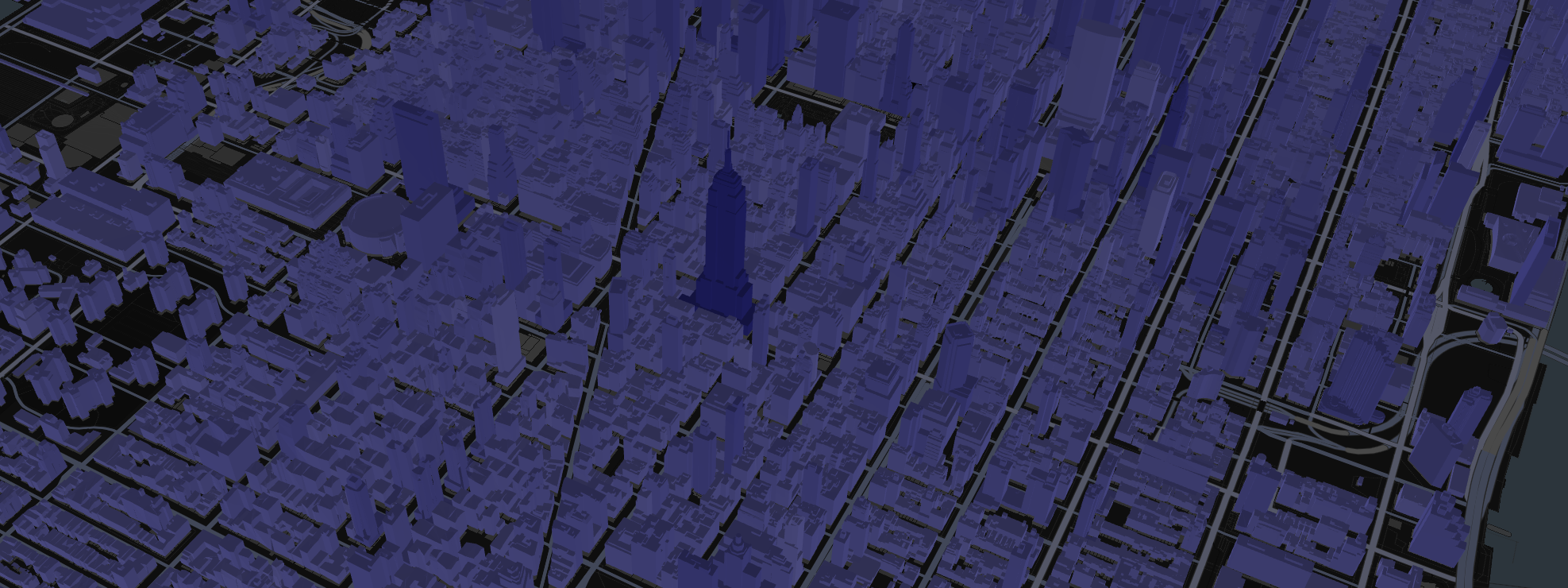Attribute-driven colorization
Please find source code of the example here
In I3S, a feature represents a real-world object within a node. For example, a building within a 3D object scene layer. Node resources such as geometry buffer and attributes can belong to a feature and can be accessed by an object-ID.
In terms of geometry, every vertex of a mesh is associated with some feature. At the same time, every feature is associated with feature attribute values. For example, there might be HEIGHT attribute that stores roof height information about every building.
All that means that it is possible to make some visual effects related to attribute value. It might be text labels, colors, opacity etc.
The complete case of attributes colorization is done in I3S Explorer. It is an open source ReactJS application. See source code on GitHub.

Find out layer's attributes
It is necessary to pick some attribute to colorize a layer by. So it is necessary to load the layer JSON:
import {load} from '@loaders.gl/core';
import {I3SLoader} from '@loaders.gl/i3s';
const i3sLayer = await load(url, I3SBuildingSceneLayerLoader);
List and types of attributes might be taken from i3sLayer.fields and i3sLayer.attributeStorageInfo properties.
Setup colorization scale
Attributes colorization capability applies linear color gradient. To create this gradient attribute values range is required.
To get minimum and maximum attribute values statistics can be used. The statistics info JSON has min and max values. Usage of those values allows setting true attribute values range not clamping extremum values.
As soon as statistics info is stored in separate resources, it has to be loaded in a separate request. Statistics is just a JSON data and can be loaded the following way:
import {fetchFile} from '@loaders.gl/core';
import {StatsInfo} from '@loaders.gl/i3s';
const dataResponse = await fetchFile(`${url}/statistics/f_5/0`);
const data = JSON.parse(await dataResponse.text());
const stats: StatsInfo | null = (data?.stats as StatsInfo) || null;
Use DataDrivenTile3DLayer
To colorize an I3S dataset on the fly you have to use DataDrivenTile3DLayer from @deck.gl-community/layers. First of all you need to add @deck.gl-community/layers into the project:
yarn add @deck.gl-community/layers
Then you can use DataDrivenTile3DLayer, colorizeTile util function as a prop customizeColors of the layer and set prop colorsByAttribute with required params (attribute name, min/max values, min/max colors, mode):
import Map from 'react-map-gl';
import maplibregl from 'maplibre-gl';
import DeckGL from "@deck.gl/react";
import {DataDrivenTile3DLayer, colorizeTile} from '@deck.gl-community/layers';
import {I3SLoader} from "@loaders.gl/i3s";
function renderLayers() {
const loadOptions = {i3s: {coordinateSystem: COORDINATE_SYSTEM.LNGLAT_OFFSETS}};
const colorsByAttribute = {
attributeName,
minValue: stats.min,
maxValue: stats.max,
minColor: [146, 146, 252, 255], // #9292FC
maxColor: [44, 44, 175, 255], // #2C2CAF
mode: 'replace'
}
const layers = new DataDrivenTile3DLayer({
data: url,
loader: I3SLoader,
onTilesetLoad: onTilesetLoadHandler,
loadOptions,
colorsByAttribute,
customizeColors: colorizeTile
});
return layers;
}
<DeckGL initialViewState={viewState} layers={renderLayers()} controller>
<Map
reuseMaps
mapLib={maplibregl}
mapStyle={style}
/>
</DeckGL>
Colorization mode
Attributes colorization capability can work in 2 modes: 'replace' and 'multiply'.
replace mode. Attribute-based colors replace geometry vertex colors.
multiply mode. Attribute-based colors multiply with geometry vertex colors.
Usage example:
function renderLayers() {
const loadOptions = {i3s: {coordinateSystem: COORDINATE_SYSTEM.LNGLAT_OFFSETS}};
const colorsByAttribute = {
attributeName,
minValue: stats.min,
maxValue: stats.max,
minColor: [146, 146, 252, 255], // #9292FC
maxColor: [44, 44, 175, 255], // #2C2CAF
mode: 'multiply' // or 'replace'
};
const layers = new DataDrivenTile3DLayer({
data: url,
loader: I3SLoader,
onTilesetLoad: onTilesetLoadHandler,
loadOptions,
colorsByAttribute,
customizeColors: colorizeTile
});
return layers;
}